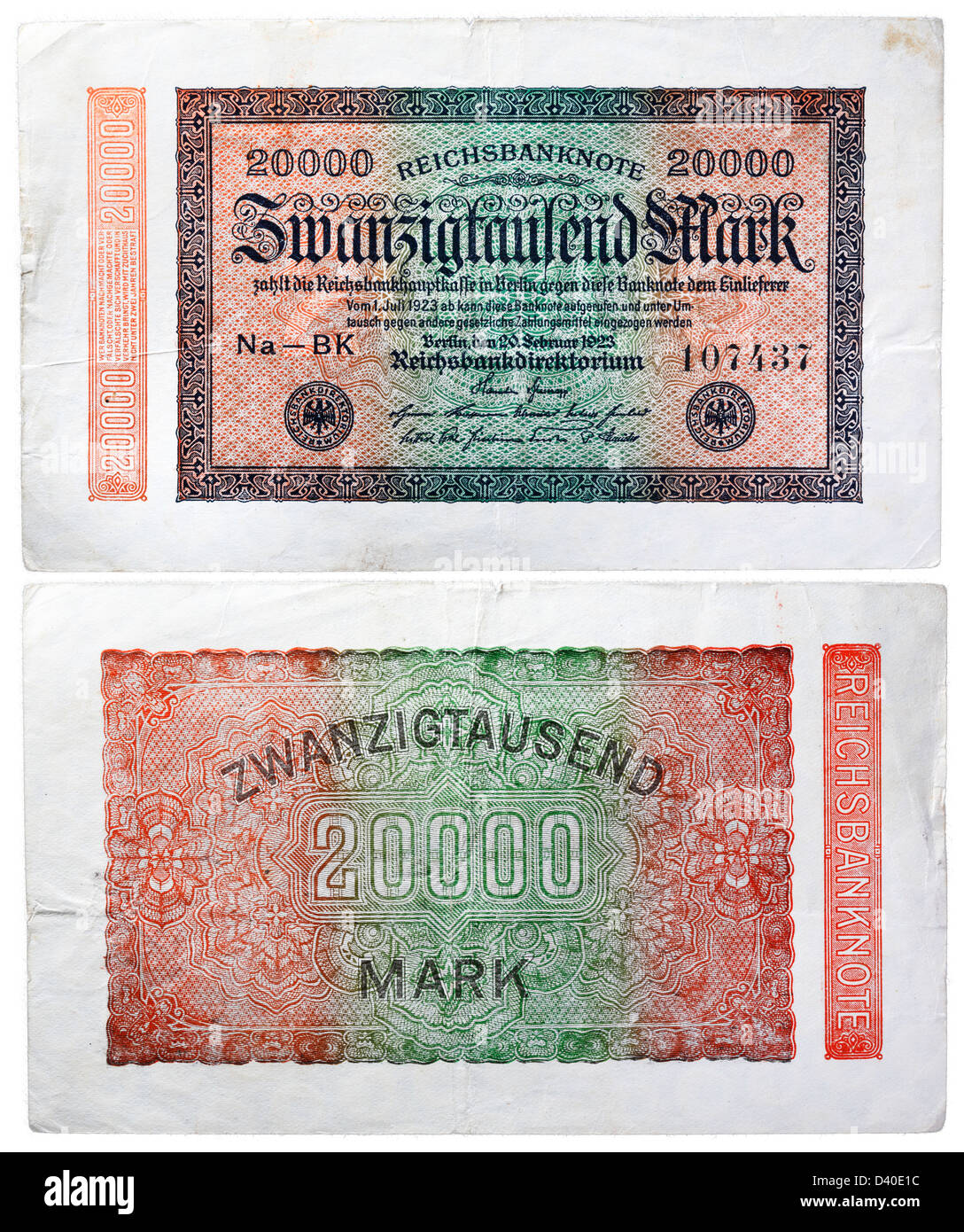AN OLD ORIGINAL 20 BIN GERMAN MARK FOR SALE WITH A SMALL AMOUNT. THE BANKNOTE IS IN A GOOD CONDITION. THE BANKNOTE IN THE PHOTOS WILL BE SENT, PLEASE CHECK THE PHOTOS.
WILL BE PACKED SECURELY AND SENT WITH REGISTERED POST AND WILL BE DECLARED AS A FREE GIFT.
Reichsbank note, valued at 20,000 marks, distributed in Germany from February to November 1923. German efforts to finance World War I sent the nation into debt. Following their defeat, the Treaty of Versailles obligated Germany to pay reparations to several countries, which increased the nation's financial struggles. The German government attempted to solve this problem by printing more money, which led to severe inflation. The inflation grew to critical levels between 1922 and1923, when the exchange rate of the mark to the United States dollar went from 2,000 marks per dollar to well over a million in a matter of months. The government printed higher and higher denominations, but was unable to keep up with the plunging rates. Germans began using the worthless bills as kindling, wallpaper, and children's crafts. The emerging National Socialist German Worker's (Nazi) Party frequently used the bills to their advantage, writing anti-Semitic messages on them, which blamed Jews for Germany's financial problems. In order to stabilize the economy, the German government established the outlet Rentenbank. The new Minister of Finance, Hans Luther, created the Rentenmark, which was backed by mortgages on all real property in Germany, rather than gold. The Rentenmark was valued at 4.2 marks to one U.S. dollar, and its introduction on November 16, 1923, successfully ended the inflation crisis. Despite this, the Nazi Party continued to use people's residual economic fears as a propaganda tool to gain power, eventually leading to Adolf Hitler becoming Chancellor in 1933.
Product code: Original 1923 Weimar Germany Reichsbanknote, 20,000 Mark. outlet Free Postage...



